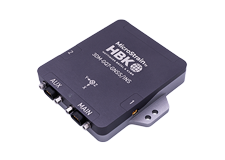Williston, VT – MicroStrain Inc. provided NASA Kennedy Space Center with the wireless sensor technology to remotely monitor lift off acoustics and vibration generated during the launch of both Endeavour and Atlantis space shuttles. The noise generated by rocket exhaust affects the safety of spacecraft, ground facilities and hazardous equipment. Data gathered by MicroStrain's sensors was used in corroborating prediction models. The deployed sensor network provides NASA with the means to implement scalable, wireless sensors capable of proactively monitoring high-value, hazardous systems.
NASA considered several systems and determined that MicroStrain's sensor solutions met their requirements for this particular project. Using MicroStrain sensors, NASA engineers Rudy Werlink and Ravi Margasahayam quantified the acoustic levels generated by the launch of space craft at a distance just over one mile from launch site. Using this data, engineers were able to validate math models for far-field acoustics. NASA's Margasahayam, describes the technology as, "a tool for Safety and Mission Assurance to support issues of safety, reliability, and maintainability of equipment and structures by condition monitoring." The test data is key to study the safety and operational readiness and/or to predict impending failure of ground structures, spacecraft, and equipment.
MicroStrain's wireless solution was comprised of multiple G-Link® accelerometers, a SG-Link® strain node, a wireless sensor data aggregator (WSDA®), and SensorCloud®, the company's latest web based data management platform.
MicroStrain's wireless systems provided a solution for many of the unique NASA test parameters. Unable to access the test site 48 hours prior to launch, the system was required to operate during this period in anticipation of launch. The result yielded over 3 gigabytes of data. By leveraging the remote data visualization and management tool, SensorCloud, MicroStrain support engineers assisted NASA to isolate and interpret launch event data. "The NASA project provided a great opportunity to demonstrate the capabilities of our wireless sensor networks," said MicroStrain President and CEO, Steve Arms. "SensorCloud is a ground-breaking technology that enables users to view key data from anywhere and offers creative new ways to manage wireless sensor networks and enhance condition based monitoring systems. We are excited to have the opportunity to work with NASA on this significant application."










